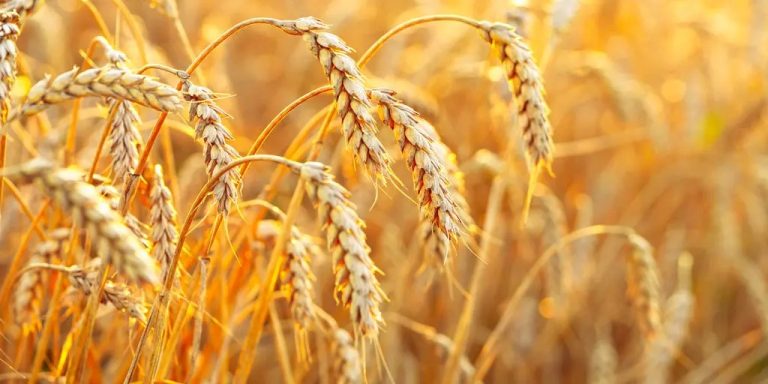from climaterealism
Author: H. Sterling Burnett
Human Progress excerpts a paid-for Bloomberg article discussing the fact that major crops are expected to continue setting records in the 2024/2025 crop year. This good news comes as no surprise to anyone who knows anything about agronomy and botany or reads regularly. climate realism. It reflects the long-term trend for most crops during periods of moderate warming and increasing atmospheric carbon dioxide (CO2) concentrations. Sadly, the Bloomberg report ignores the proven and important role that rising carbon dioxide levels play in increasing crop yields and yields.
Human Progress wrote:
Compared with a decade ago, world wheat production will increase by about 10% in 2024-25, corn production will increase by about 15%, soybean production will increase by nearly 30%, and rice production will increase by about 10%. Except for corn, the output of the other three major grain varieties all hit record highs.
[T]The U.S. Department of Agriculture said it expects U.S. farmers to produce record amounts of two major food commodities: corn yields averaging 183.1 bushels per acre and soybeans yielding 53.2 bushels per acre…
Twenty years ago, U.S. corn farmers harvested about 150 bushels per acre; in the mid-1980s, that number was closer to 110 bushels.
This good news further confirms climate realism It was pointed out long ago. Moderately warm weather and higher carbon dioxide levels are generally beneficial to plants, resulting in a net greening of the planet and increased crop yields and yields. In fact, the latest data from the Food and Agriculture Organization of the United Nations (FAO) show that worldwide production and production of cereal crops (the part of the crop that accounts for the majority of daily calorie intake and is often called a staple food), such as rice, wheat, Yields of rye, oats, barley, millet and corn) have increased sharply under recent mild warming. Between 1990 and 2022, the most recent year for which FAO has data:
- Cereal production increased by nearly 52%, with the latest production record set in 2022; and
- Cereal production increased by about 57%. (see picture below)

Unfortunately, Bloomberg downplays or outright ignores the role that a warming climate and rising carbon dioxide emissions are playing in record crop yields and production, attributing record crop yields to expanded irrigation and improvements to better combines and tractors, etc. technology. While improvements and wider access to technology have undoubtedly contributed to increases in crop yields, research has thoroughly shown that so too have increases in carbon dioxide emissions. In fact, higher carbon dioxide levels may be the most important factor driving increased crop yields in recent decades.
As discussed in more than 200 articles climate realismWhat is true for global cereal production also applies to most crops such as fruits, legumes, tubers and vegetables in most countries in the world. During recent climate changes, yields have reached record highs, food security has improved, and hunger and malnutrition have declined.
Agriculture and botany explain why crop yields and yields increase in the face of global warming, and the same science explains why the world should expect continued growth in crop yields. Mild warming has brought about a slight increase in rainfall totals, a modest lengthening of the growing season and a reduction in late frosts that kill crops. In addition, crops benefit from higher levels of carbon dioxide in the atmosphere, which any greenhouse operator will tell you is plant fertilizer, helping plants grow bigger and faster and use water more efficiently.
Thousands of real-world field and greenhouse experiments summarized by CO2 Science document the beneficial effects of higher carbon dioxide concentrations on plant growth and crop production. Even NASA acknowledged this, writing:
Research shows that higher concentrations of atmospheric carbon dioxide affect crops in two important ways: They increase crop yields by increasing the rate of photosynthesis, which stimulates growth, and they reduce the amount of water lost by crops through transpiration. Plants transpire through their leaves, which contain tiny pores called stomata that open and collect carbon dioxide molecules for photosynthesis. In the process, they release water vapor. As the concentration of carbon dioxide increases, the pores do not open as wide, resulting in less transpiration by the plant, which in turn increases water use efficiency.
Specifically, research cited in the journal Environmental Economics and Policy Research found:
[S]Satellite-based studies provide compelling evidence that the overall growth effect is stronger than expected in the 1990s. Zhu et al. (2016) published a comprehensive study on greening and human activities from 1982 to 2009. Slightly less than 15% but it was found to be responsible for approximately 70% of greening, followed by coal burning and aeration of nitrate-containing agricultural fertilizers leading to the deposition of nitrogen compounds in the air (9%), which lengthens the growing season (8% )) and land cover change (4%), mainly reforestation in areas such as southeastern North America.
It is refreshing to see some good news about crop production coming out of a major media outlet like Bloomberg, in a context where the mainstream media continues to spread false stories about climate change causing crop failures. One can only speculate why its authors ignored the established role that decades of mild warming and more carbon dioxide have played, and continue to play, in increased food production.
H. Sterling Burnett

Dr. H. Sterling Burnett is director of the Arthur B. Robinson Center for Climate and Environmental Policy and editor-in-chief of Environment and Climate News. In addition to directing the Heartland Institute's Arthur B. Robinson Center for Climate and Environmental Policy, Burrett puts together environment and climate news and is editor of the Heartland Climate Change Weekly email, as well as Environment and Climate Host of a news podcast.
Relevant
